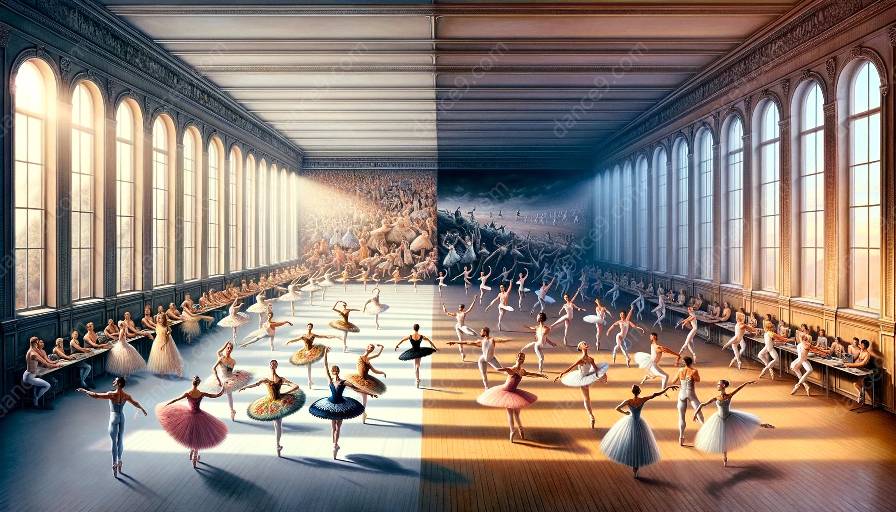Ballet, with its classical elegance and grace, requires significant physical and mental stamina. The training methods employed greatly impact the abilities of ballet dancers. Let's explore how different training methods influence ballet dancers and how they compare to various ballet styles, all within the historical and theoretical framework of ballet.
Different Methods of Training in Ballet
The training methods in ballet can vary widely, ranging from traditional Russian and French techniques to more contemporary approaches. Each method emphasizes different aspects of ballet, including technique, posture, flexibility, and artistry. These methods also differ in their approach to training young dancers, as well as the use of conditioning and supplementary exercises.
Impact on Ballet Dancers' Abilities
The impact of these training methods on ballet dancers' abilities is profound. For example, the Vaganova method, known for its emphasis on strength and precision, often produces dancers with exceptional technical proficiency. In contrast, the Cecchetti method, with its focus on lightness and fluidity, may result in dancers with a more ethereal quality in their movements.
Comparative Study of Different Ballet Styles
When examining the impact of training methods, it is essential to compare how these methods align with different ballet styles. For instance, the athleticism and boldness fostered by the Balanchine style may be best suited to training methods that prioritize explosiveness and agility, while the lyrical and expressive qualities of the Romantic ballet style may require a different set of training approaches to fully develop.
Ballet History and Theory
To truly understand the impact of training methods on ballet dancers' abilities, we must delve into the rich history and theory of ballet. This includes exploring the evolution of ballet techniques and the influence of prominent ballet figures such as Marius Petipa and Rudolf Nureyev. Understanding the historical and theoretical underpinnings of ballet will provide valuable insight into the rationale behind different training methods and their impact on dancers.
By examining the intersection of different training methods, ballet styles, and historical and theoretical contexts, we can gain a comprehensive understanding of how ballet dancers' abilities are shaped and how the art form itself continues to evolve.





























